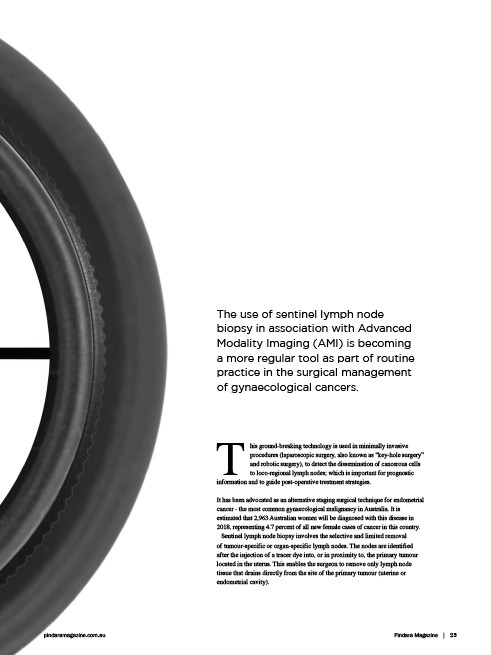
The use of sentinel lymph node
biopsy in association with Advanced
Modality Imaging (AMI) is becoming
a more regular tool as part of routine
practice in the surgical management
of gynaecological cancers.
This ground-breaking technology is used in minimally invasive
procedures (laparoscopic surgery, also known as “key-hole surgery”
and robotic surgery), to detect the dissemination of cancerous cells
to loco-regional lymph nodes; which is important for prognostic
information and to guide post-operative treatment strategies.
It has been advocated as an alternative staging surgical technique for endometrial
cancer - the most common gynaecological malignancy in Australia. It is
estimated that 2,963 Australian women will be diagnosed with this disease in
2018, representing 4.7 percent of all new female cases of cancer in this country.
Sentinel lymph node biopsy involves the selective and limited removal
of tumour-specific or organ-specific lymph nodes. The nodes are identified
after the injection of a tracer dye into, or in proximity to, the primary tumour
located in the uterus. This enables the surgeon to remove only lymph node
tissue that drains directly from the site of the primary tumour (uterine or
endometrial cavity).
pindaramagazine.com.au Pindara Magazine | 25